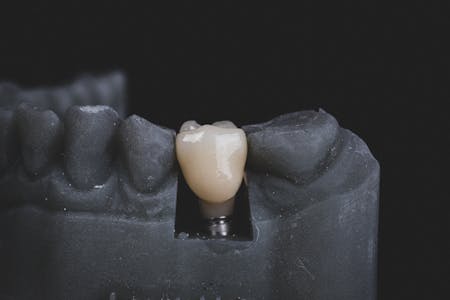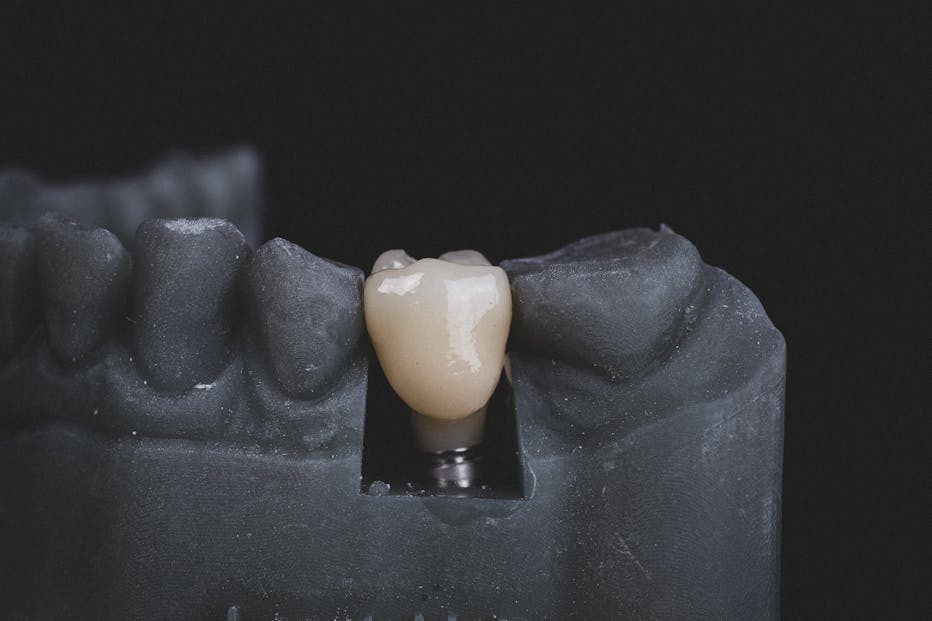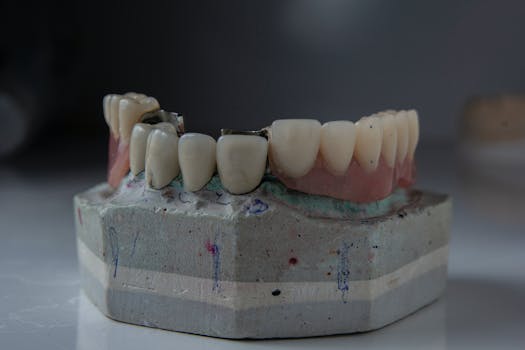Dental implants: The modern solution for a radiant smile
A missing tooth can affect your self-confidence and change your smile. But don't worry, the world of dentistry has made huge strides in recent years, especially in the field of implantology. Dental implants are the modern solution for missing teeth and this blog post will tell you everything you need to know about them.



What are dental implants?
Dental implants are artificial tooth roots that are inserted into the jawbone to replace missing teeth. They are usually made of ceramic or titanium, a biocompatible material that is well accepted by the body and has high stability. These implants provide a firm base for your natural teeth and can help close the gap between your teeth, especially if it is a single tooth.
The structure of a dental implant can be divided into three main components. The implant screw, which is placed directly into the jawbone, the abutment (connecting element), which serves as an intermediate piece between the screw and the artificial tooth crown, and finally the tooth crown itself, which forms the visible part of the implant and is matched in shape and colour to the natural teeth. The combination of these components makes it possible to mimic both the function and the appearance of natural teeth.
Titanium or ceramic?
When choosing the right material for dental implants, there are usually two options available: Titanium and ceramic.
Titanium implants have been the gold standard solution in implantology for decades. They are known for their durability, stability and biocompatible properties. This means that titanium is well accepted by the body and rarely leads to allergic reactions or rejection. In addition, titanium promotes osseointegration, a process in which the jawbone grows firmly into the implant, which is crucial for its stability.
On the other hand, ceramic implants, especially those made of zirconia, are gaining popularity. They are an excellent option for patients who are looking for a metal-free solution, especially for aesthetic or allergic reasons.
Ceramic implants are naturally white, making them an ideal choice for patients who are concerned about the metallic colour of titanium. They are also corrosion resistant and offer similar strength and longevity to titanium. Ceramic implants do not contain any metals, making them a preferred choice for patients with certain chronic conditions, such as allergies or rheumatism. However, they can be a little more brittle in some cases.
When deciding between titanium and ceramic, one should consider both functional and aesthetic needs and seek advice from an experienced implantologist to make the best choice for the individual situation.


The perfect teeth whitening and care routine. The Whitening & Care Routine combines the products: Whitening Kit for teeth whitening and Whitening Toothpaste Extra White for daily care.
Why dental implants?
A dental implant is considered when, for example, root canal treatment does not seem feasible or advisable, especially if the tooth is already so badly compromised that it cannot be saved.
If you are suffering from tooth loss, whether due to periodontitis, an accident or osteoporosis, dental implants can offer a permanent solution. Not only do they look like your natural teeth, they feel like them too. Unlike removable dentures, they are firmly anchored in your jaw, giving you more security and comfort. Implant-supported solutions in particular are superior to conventional dentures.
The process of dental implantation
At the beginning of treatment, a comprehensive examination of the current condition of the teeth, general health and potential risks is carried out. An individual treatment plan is then drawn up and discussed with the patient.
X-rays and DVT are used to check the bone supply and the position of the tooth roots. In case of bone loss, bone augmentation may be necessary to create a solid base for the implant. Based on the X-rays, the implantologist draws up a treatment plan. Implant treatment is usually carried out under local anaesthetic. In cases where the implant is placed close to the maxillary sinus, a sinus lift may be necessary.
During the surgical procedure, the gum is cut open under local anaesthesia and an opening for the implant is drilled into the jawbone. In 'closed healing', the gum is sutured over the implant, while in 'open healing', the gum is sutured around the neck of the implant. Most patients experience little discomfort after implant placement. However, if desired, the procedure can be performed under general anaesthesia.
After the surgical procedure in which the implant is placed in the jawbone, the healing phase begins. During this healing phase, the implant integrates with the jawbone. This healing process can take several weeks to months. An abutment is then screwed onto the implant, which serves as a connection between the implant and the tooth crown.
Possible complications
As with any surgical procedure, there are risks. Swelling, bruising and mild pain are normal after implant placement. It is important to maintain oral hygiene to avoid complications such as peri-implantitis. Regular dental cleanings at our ALPINE WHITE studio and flossing can help protect your new and healthy teeth.
Costs and location
The cost of dental implants can vary depending on the dental practice, but there are many highly qualified implantologists in cities like Zurich and other parts of Switzerland. It is important to be aware of the costs and the treatment plan before you decide on an implant.
The difference between dental implants and dental crowns
A dental implant and a dental crown are both dental procedures used to improve the function and appearance of teeth, but they have different applications and characteristics.
A dental implant, as already learned, is an artificial tooth root, usually made of titanium or ceramic, that is inserted into the jawbone to replace a missing tooth. It serves as a stable base for a dental prosthesis attached to it, which is often a dental crown. The implant is surgically placed in the jawbone and then has to osseointegrate with the bone, a process in which the bone grows firmly into the implant. This can take several months.
A crown, on the other hand, is a kind of "hat" or covering for a damaged or worn tooth. It is often used to protect a tooth that has been weakened by decay, fracture or other factors. The crown is custom-made to fit exactly over the existing tooth and is attached with a special cement. So while a dental implant is there to replace the root of a missing tooth and provide a base for a tooth replacement, a dental crown is there to restore the shape, size and function of a damaged but still existing tooth. It is important to understand that although they often work together, they are different parts of a restorative process.
Removable dentures
Dental restorations are designed to be easily removed for daily cleaning, making oral hygiene easier. Although they do not offer the same strength and stability as fixed alternatives, they are often less expensive and can last for many years with proper care. For many people, removable tooth replacement solutions offer not only functional benefits, such as improved chewing and speaking, but also aesthetic benefits, restoring self-confidence and providing a full smile.


